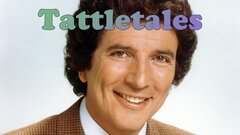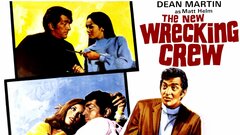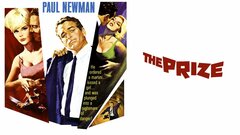An archetypal blonde bombshell in the tradition of Marilyn Monroe and Brigitte Bardot, Elke Sommer had been born amid the devastation of World War II and raised by her Protestant parents to revere God and animals. Maturing into a strapping young woman who seemed the personification of beauty in nature, Sommer was discovered by an Italian film producer while on vacation in Italy and cast in a string of features, graduating in time from bit parts to lead roles.
After a short Continental career and work in France, Spain, England, and Germany, Sommer's goddess-like demeanor and sly comic timing drew the attention of the Hollywood studios. An international superstar thanks to plum (and often semi-clad) roles alongside Paul Newman in "The Prize" (1963), Peter Sellers in "A Shot in the Dark" (1964) and Bob Hope in "Boy, Did I Get a Wrong Number" (1965), Sommer augmented her celebrity status by posing nude for Playboy, cementing her reputation as a jet-set sex kitten.
When opportunities dried up in Hollywood, she returned to the Continent for a wide variety of projects, among them Mario Bava's "Lisa and the Devil" (1972), Peter Collinson's "Ten Little Indians" (1975), and Richard Quine's "The Prisoner of Zenda" (1979), which reunited her with Sellers. A fixture on talk shows, award ceremonies, and quiz programs, and a fierce competitor at tennis, golf, and Formula 1 racing, Sommer sailed past retirement age at full steam, living life to the extreme and entirely on her own terms.
Elke Sommer was born Elke Schletz in Berlin's Spandau district on Nov. 5, 1940, mere weeks after Great Britain's Royal Air Force began bombing the Nazi capital in an attempt to undermine the expansion of Adolf Hitler's Third Reich. In 1942, Peter Schletz, a Lutheran pastor, evacuated his wife and only child to a basement apartment in the Franconian village of Niederndorf in southern Germany. To supplement her husband's meager income, Renata Topp took in the laundry of her neighbors and clothed her daughter in cast-offs; until she was 13, Elke Sommer never wore a dress. Beset by chronic illness, Peter Schletz died in 1955, leaving the family in greater financial straits. One of only five females permitted to attend the Gymnasium Fridericianum, a prestigious high school in nearby Erlangen, Sommer excelled in the study of Greek and Latin but suffered at mathematics and the sciences. A facility for languages gave her the idea to drop out of high school to study linguistics at Erlangen's Friebelsche Institute, with a mind toward becoming a diplomatic interpreter.
Because she could only begin at the Friebelsche Institute when she was 18, Sommer traveled alone to England in the spring of 1957 to work as an au pair. During her time in the U.K., she was assigned to the household of a fishmonger, helping to care for his three children while taking supplemental classes in linguistics. At the end of her first year away from home, she passed the Cambridge Examination as part of her enrollment requirement for the Friebelsche Institute. As a prize for her accomplishment, her mother took her on a trip to the Italian resort town of Viareggio, in Tuscany. While dining at a sidewalk café, Sommer was awarded the title of "Miss Viareggio." In addition to the official prizes of nylons and chocolate, she was offered the opportunity to appear in the 1959 Italian film "L'amico del giaguaro" ("The Friend of the Jaguar"), directed by Giuseppe Bennati and starring Walter Chiari. The role of Grete, a pretty German tourist given a guided tour of Rome by young thugs who want to steal her camera, paid $2,000 - more than she had earned in a year in England.
Sommer's ample figure (36-22-36) and facility with languages would make her a natural for continental film work through the decade. It was while appearing in Italian films that she adopted her stage name, a more manageable alternative for non-Germans. Sommer went on to appear in Lucio Fulci's youth-oriented "I ragazza del juke-box" ("Jukebox Girls") (1960) and "Urlatori alla sbarra" ("Howlers in the Dock") (1960). For Vittorio de Sica, she played a Venetian chambermaid in "Uomini e nobiluomini" ("Men and Noblemen") (1960). Sommer traveled to Spain to play a young Frenchwoman in Georg Tressler's "Das Totenschiff" ("Ship of the Dead") (1960) opposite Horst Bucholz and made her English language film debut in Cyril Frankel's "Why Bother to Knock" (1960), as the Swiss paramour of producer-star Richard Todd. In France, she showed off considerable skin as an imperiled German fashion model in "De quoi tu te mêles Daniela!" ("Daniela by Night!") (1961) and as an amoral teen temptress in "Douce violence" ("Sweet Ecstasy") (1961), both directed by Max Pécas.
Returning to Germany after a protracted working vacation abroad, Sommer's appearance in Jürgen Goslar's award-winning "Das Mädchen und der Staatsanwalt" (1962) led to a call from Hollywood. She joined other international sex symbols Melina Mercouri, Jeanne Moreau and Romy Schneider to play the women of Carl Foreman's "The Victors" (1963). Sommer also appeared nude in the film for scenes intended only for international release. She enjoyed more screen time opposite Paul Newman in "The Prize" (1963), whose principal photography was split between Sweden and Hollywood. In support of the film, MGM gave Sommer the equivalent of a coming-out party, held at the Beverly Wilshire Hotel. The actress's ability to converse with the press in multiple languages impressed the assembled newsman, and none more than Joe Hyams, head of the Hollywood office of The New York Herald-Tribune, to whom Sommer would be married the following year. For her work in "The Prize," Sommer received the Golden Globe Award for "Best Newcomer - Female." High-profile parts followed, including opposite Peter Sellers in Blake Edwards' "A Shot in the Dark" (1964), sandwiched between Dick Van Dyke and James Garner in Norman Jewison's "The Art of Love" (1965), and sheathed in bubbles for the Bob Hope vehicle "Boy, Did I Get a Wrong Number" (1966), in which she played a frustrated French actress who quits Tinseltown for the Oregon backwoods.
In stark contrast to her comic and decorative roles were Sommer's appearances in dramas like Burt Kennedy's downbeat crime film "The Money Trap" (1965), as the spendthrift wife of rogue cop Glenn Ford; as a lesbian assassin in Ralph Thomas' sardonic "Deadlier Than the Male" (1967), an attempt to retool Herbert Cyril McNeile's post-World War I gumshoe Bulldog Drummond as high-tech competition for the James Bond franchise; as Robert Stack's widowed helpmeet in obtaining the coveted Peking Diamond in James Hill's "The Corrupt Ones" (1967); and as the comely key to a fortune in stolen gold in Antonio Isasi-Isasmendi's "They Came to Rob Las Vegas" (1968), co-starring Gary Lockwood, Lee J. Cobb and Jack Palance.
The instant demise at the box office of Sommer's return to comedy in George Marshall's "The Wicked Dreams of Paula Schultz" (1968), in which she played a defecting East German athlete alongside many cast members from the long-running CBS sitcom "Hogan's Heroes" (1965-1971), marked the effective end of her Hollywood career. She did turn up in a throwaway supporting role opposite Dean Martin in the spy spoof "The Wrecking Crew" (1969). One of Sommer's co-stars in "The Wrecking Crew" had been Sharon Tate, wife of Polish filmmaker Roman Polanski. The horrific slaying of Tate and several others in August 1969 by followers of madman Charles Manson may have had as much to do with Sommer's departure from Hollywood as her diminishing career options; journalist husband Hyams received regular death threats for years afterward from Manson's "Family." Sommer spent most of the next 20 years globetrotting: to Iran for Jean Negulesco's "The Invincible Six" (1968) with Stuart Whitman and for Peter Collinson's "And Then There Were None" (1974), whose all-star cast included Oliver Reed and the voice of Orson Welles; to England for Etienne Périer's WWI espionage thriller "Zeppelin" (1971) and the sex comedies "Percy" (1971) and "Percy's Progress" (1974); and to Italy for Mario Bava's lurid horror films "Gli orrori del castello di Norimberga" ("Baron Blood") (1972) and "Lisa and the Devil" (1974).
As Sommer aged into her forties and her star wattage dimmed, she kept busy with roles on television, in films, and on the stage. In 1979, she reunited with Peter Sellers for "The Prisoner of Zenda," shortly before the troubled comic's untimely death. Divorced from Hyams in 1981, she remarried and relocated to Germany, while continuing to travel for occasional work and for appearances on talk shows. An accomplished painter since her preteen years, Sommer published the book Painting with Elke in 1984 and combined her love of aesthetics and race car driving as the host of the syndicated series "Elke Sommer's World of Speed and Beauty" (1984-85). In 1989, she published her autobiography, From One Pastor's Daughter to Another. The following year, she engaged in an ugly public feud with Zsa Zsa Gabor, which allowed Sommer to collect $3.3 million as part of a libel suit. A former competitive tennis player, whose prowess on the court earned her the affectionate nickname "The Brute," Sommer traded the tennis racket for a golf club in later years to participate in charity tournaments and came out of semi-retirement to appear in a German language film in 2010.
By Richard Harland Smith
























































































































































































